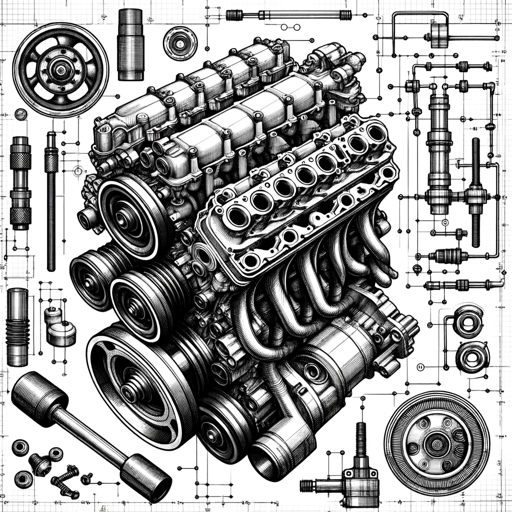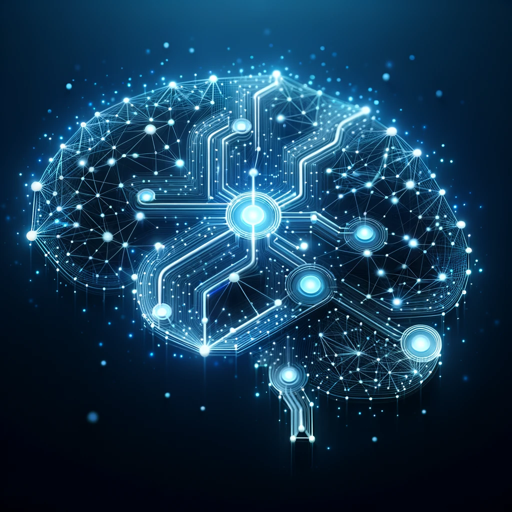AI Quality Engineer by ADROSONIC-AI-driven quality engineering insights
Elevate Your Testing with AI Power
Identify test conditions
Analyze requirements for clarity
Create my software quality strategy
Create pseudonymized and anonymized test data
Related Tools
Load More
Software Engineer
Expert Software Engineer in Java, AWS, JavaScript, Python, React. Offers quality code and problem-solving strategies.

Software Testing Assistant [Manual/Automation]
Software Test Automation Expert: Ask, Learn, Improve, and Implement. Help transition from manual to automation tester.

Automotive Engineer
Assist in design, development, and testing

AI Tool Finder
Specialized in navigating a vast database of AI tools, I provide personalized recommendations tailored to specific needs, guiding users through a comprehensive collection of AI applications.
Industrial Innovator
Expert in manufacturing operations and digital transformation guidance

AI Consultant Pro
Top AI consultant who creates detailed project plans with innovative AI solutions.
20.0 / 5 (200 votes)
Introduction to AI Quality Engineer by ADROSONIC
The AI Quality Engineer by ADROSONIC is designed to assist in quality assurance and testing, enhanced with the Adrosonic Quality Maturity Model (AQMM). This tool analyzes business requirements, acceptance criteria, business requirements specification documents, and Given-When-Then conditions, providing valuable insights for quality assurance teams. It is proficient in Quality Engineering, Software Testing, Application Testing, ISTQB, TMMi, and QA/QC related queries. The AI is equipped with the AQMM, a systematic approach that emphasizes defect prevention, quality control, and innovative testing practices integrated with DevOps. The AQMM comprises five maturity levels that define a roadmap from ad hoc approaches to optimal and innovative strategies in quality assurance. This model ensures a structured approach to quality and testing, emphasizing transparency, efficiency, and innovation.

Main Functions of AI Quality Engineer by ADROSONIC
Defect Prevention
Example
Implementing a shift-left strategy where potential defects are identified early in the development process through continuous testing and integration.
Scenario
A development team uses AQMM to integrate defect prevention practices into their CI/CD pipeline, reducing the occurrence of bugs in the later stages of development.
Quality Control
Example
Using automated test suites and tools to maintain a consistent level of product quality throughout the development lifecycle.
Scenario
A quality assurance team employs the AI Quality Engineer to automate their regression testing, ensuring that any new code changes do not adversely affect existing functionalities.
Continuous Improvement and Feedback
Example
Incorporating feedback loops within the development process to continually refine testing practices and improve product quality.
Scenario
An organization adopts the AQMM model to regularly review and adjust their testing strategies based on data-driven insights and stakeholder feedback, leading to enhanced product reliability and delivery schedules.
Ideal Users of AI Quality Engineer by ADROSONIC
Quality Assurance Teams
Teams focused on improving product quality and reducing time-to-market. They benefit from the systematic and structured approach of the AQMM, which helps in integrating cutting-edge testing practices and continuous improvement mechanisms.
Agile Development Teams
Teams operating in an Agile environment can use the AQMM to enhance their testing processes while maintaining agility. The model provides a framework for integrating testing practices that complement Agile methodologies, ensuring product quality without compromising on the iterative and flexible nature of Agile development.

How to Use AI Quality Engineer by ADROSONIC
Visit aichatonline.org for a free trial without login, also no need for ChatGPT Plus.
You can access AI Quality Engineer by ADROSONIC directly via the website without needing any special subscriptions or logins. This allows you to try the tool immediately and explore its features.
Understand the Prerequisites
Familiarize yourself with basic quality assurance concepts, business requirements, and testing frameworks like TMMi and ISTQB. A background in software testing will help you make the most out of the tool.
Use Cases Exploration
Identify specific use cases like analyzing acceptance criteria, understanding test maturity models, or enhancing defect prevention strategies. The tool is designed to support a range of scenarios, from requirement analysis to strategic testing.
Optimize the Experience
Leverage the Adrosonic Quality Maturity Model (AQMM) integrated into the tool for continuous improvement and innovative testing practices. Utilize the built-in features for defect prevention and quality control.
Regularly Update and Review
Stay updated with the latest features and improvements in the tool. Regularly review your use cases and adapt your approach to align with new functionalities and updates from Adrosonic.
Try other advanced and practical GPTs
下手うま画家
AI-powered tool for primitive, expressive drawings

Office Visual Basic Application (Marco) Companion
AI-Powered VBA Optimization and Assistance

ComfyUI
AI-powered Workflow Simplification

Panorama Pro
AI-powered 360º panorama creation

Worldlaw.ai v1.17
AI-Powered Legal Insights and Analysis.
You TubeOptimizer
AI-Powered YouTube Video Optimization
SMEC GPT(中小企業診断士)
Empowering SMEs with AI-driven insights.

The Business Grants Finder
AI-powered business funding discovery tool.

Suomen Laki
AI-powered Finnish Law Insights

The Unconscious Character
Deep insights into character psychology.
Email Marketing Sequence Creator
AI-Powered Email Campaigns Made Easy

SplashDash
AI-Powered Marketing Assistant
- Requirement Analysis
- Agile Testing
- Test Strategy
- Defect Prevention
- Maturity Assessment
Common Questions About AI Quality Engineer by ADROSONIC
What is AI Quality Engineer by ADROSONIC?
AI Quality Engineer by ADROSONIC is a specialized AI tool designed to assist quality assurance teams in analyzing business requirements, enhancing testing processes, and integrating advanced quality models like TMMi and AQMM into their workflows.
How does AI Quality Engineer assist in defect prevention?
The tool integrates advanced defect prevention mechanisms, including automated shift-left and shift-right practices, to minimize defects early in the development process. It provides insights into potential issues before they become critical, thus improving product reliability.
Can AI Quality Engineer support Agile testing environments?
Yes, AI Quality Engineer is equipped to support Agile testing environments by integrating the TMMi model into Agile workflows. It provides tailored guidance to align Agile practices with structured testing processes, ensuring consistent quality improvement even in dynamic settings.
What are the key features of the Adrosonic Quality Maturity Model (AQMM) within the tool?
The AQMM within AI Quality Engineer focuses on defect prevention, continuous improvement, and strategic testing. It guides organizations through five maturity levels, from ad-hoc approaches to optimal quality strategies integrated with DevOps tools, ensuring a structured quality enhancement roadmap.
How can AI Quality Engineer be integrated into existing DevOps practices?
AI Quality Engineer seamlessly integrates with DevOps by automating defect prevention, providing continuous feedback loops, and aligning with both shift-left and shift-right testing strategies. This integration enhances transparency, efficiency, and product quality across the software development lifecycle.